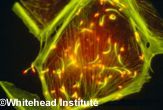
A new way of thinking about the dirt under our feet is sure to dismay germophobes everywhere. Scientists now think Earth's soil contains 100 times more bacteria species than previously thought.
Bacteria are single-celled organisms that inhabit almost every conceivable place on the planet, from the lining of our guts to the harshest outside environments. Previous studies estimated that a gram of unpolluted soil -- roughly the volume of the tip of a pinky finger -- contained around 10,000 different species of bacteria.
But a fresh analysis of soil data by researchers at the Los Alamos National Laboratory in New Mexico suggests the actual number is probably closer to 1 million or more.
The study didn't involve any actual digging.
The old estimate was based on the assumption that all the bacteria species in a sample were equally abundant, but this isn't very realistic, said Jason Gans, a microbiologist at Los Alamos National Laboratory in New Mexico and lead author of the study.
More likely, some bacteria species have fewer individuals than others, just like it is in the world of larger plants and animals.
"We've gotten rid of that and say that there can be ten times as many species A as species B," Gans told LiveScience.
Sign up for the Live Science daily newsletter now
Get the world’s most fascinating discoveries delivered straight to your inbox.
The researchers tweaked the formula that was previously used to calculate bacteria diversity and obtained the much higher figure. Actual soil surveys would have to be done to confirm or refute the speculation.
The idea is detailed in the Aug. 26 issue of the journal Science.









